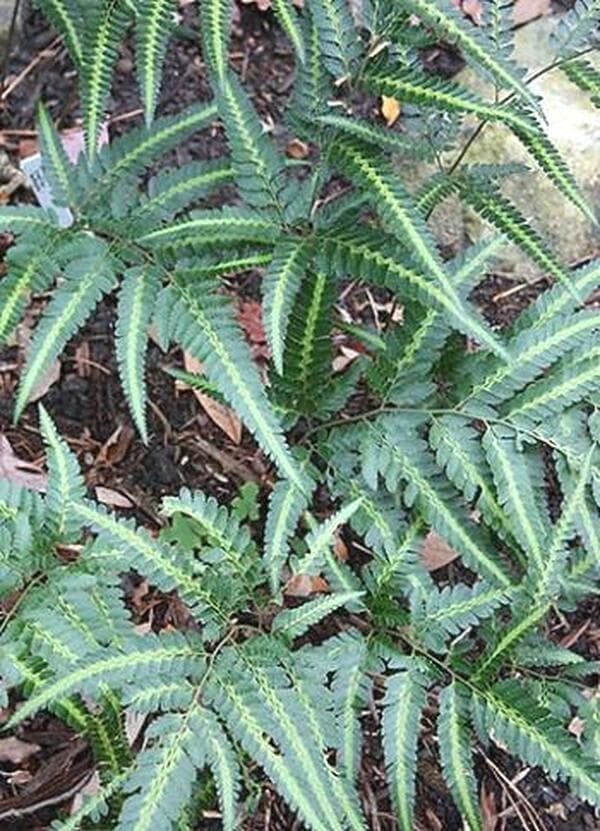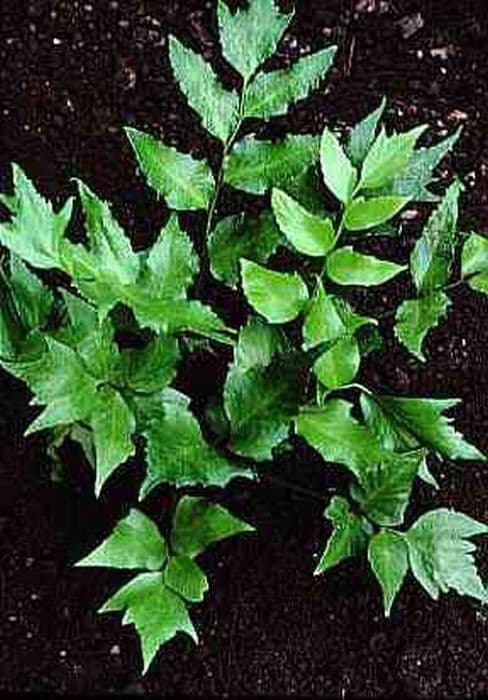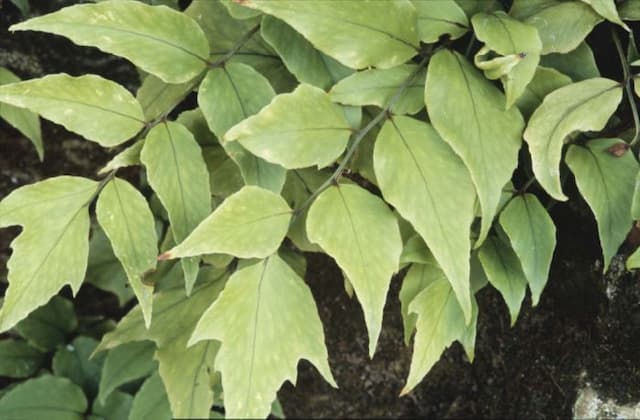Leatherleaf Fern Rumohra adiantiformis
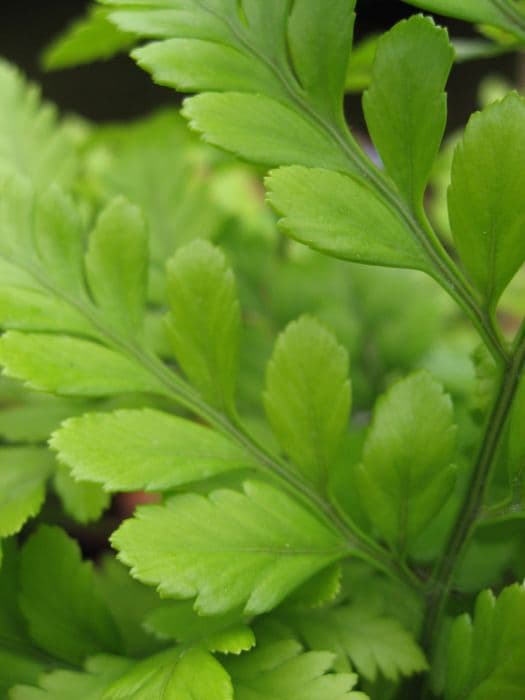

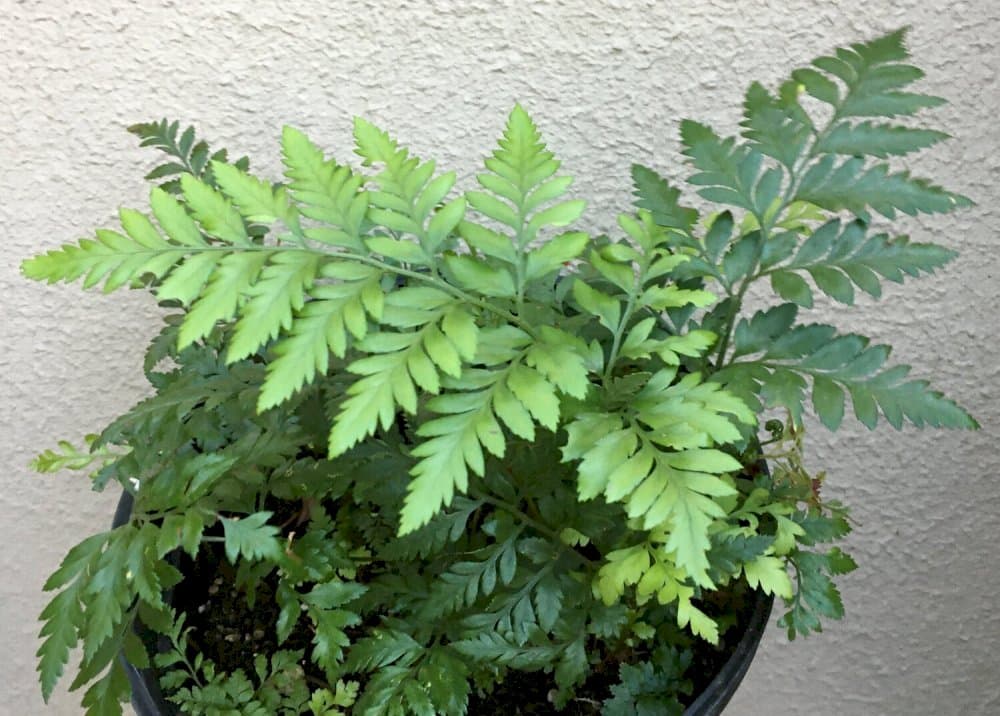
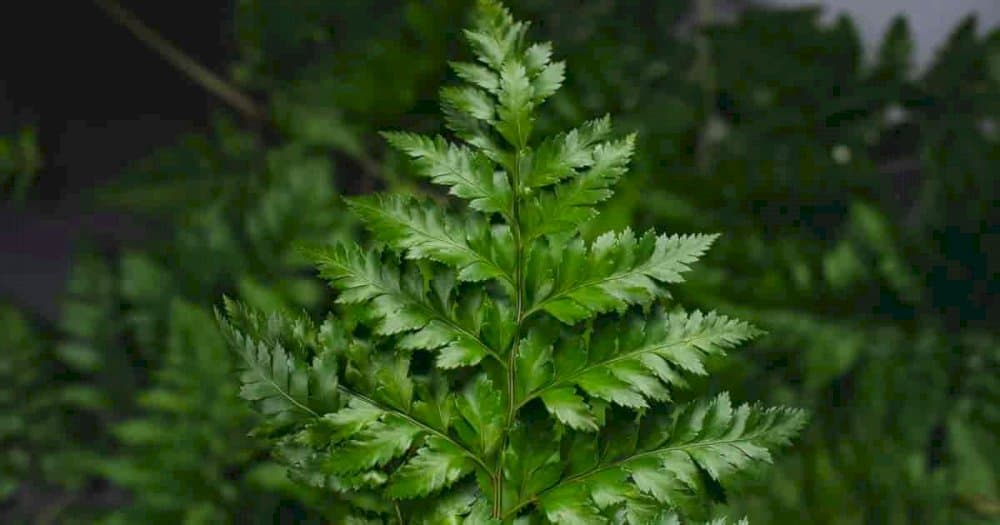
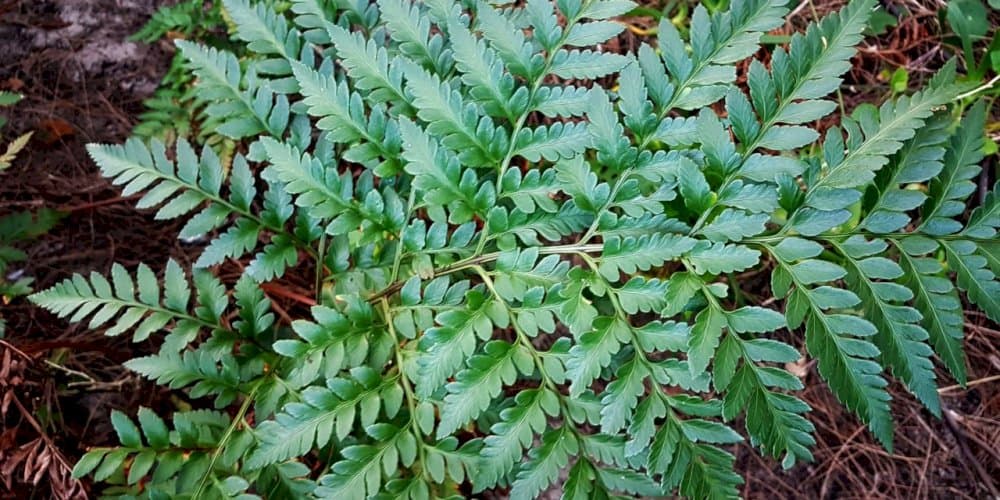
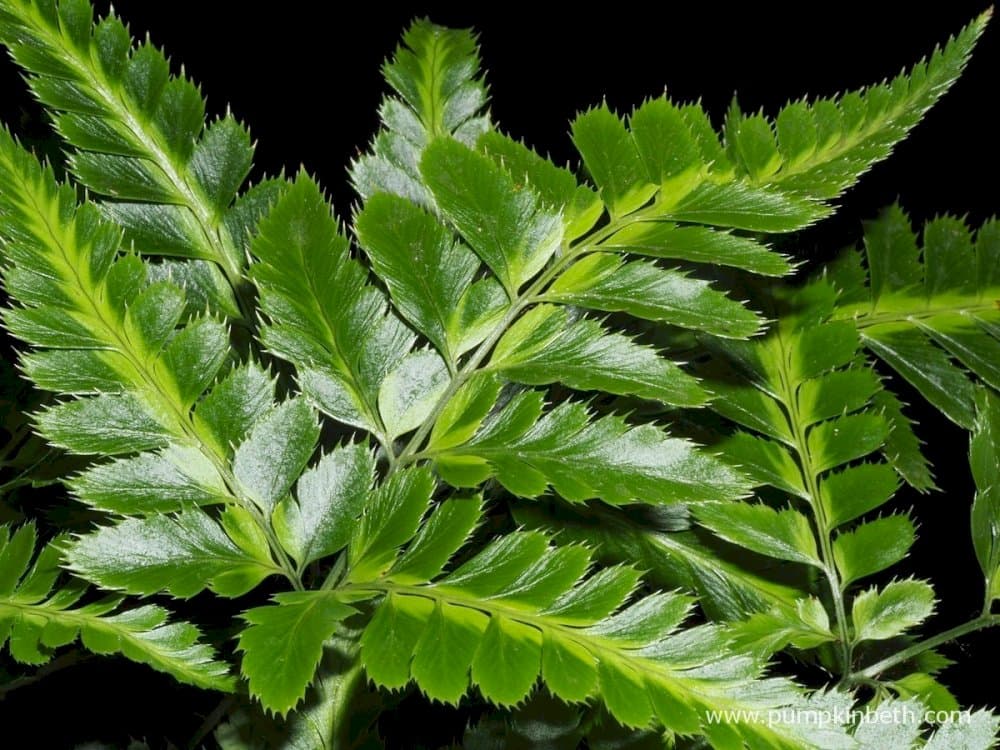
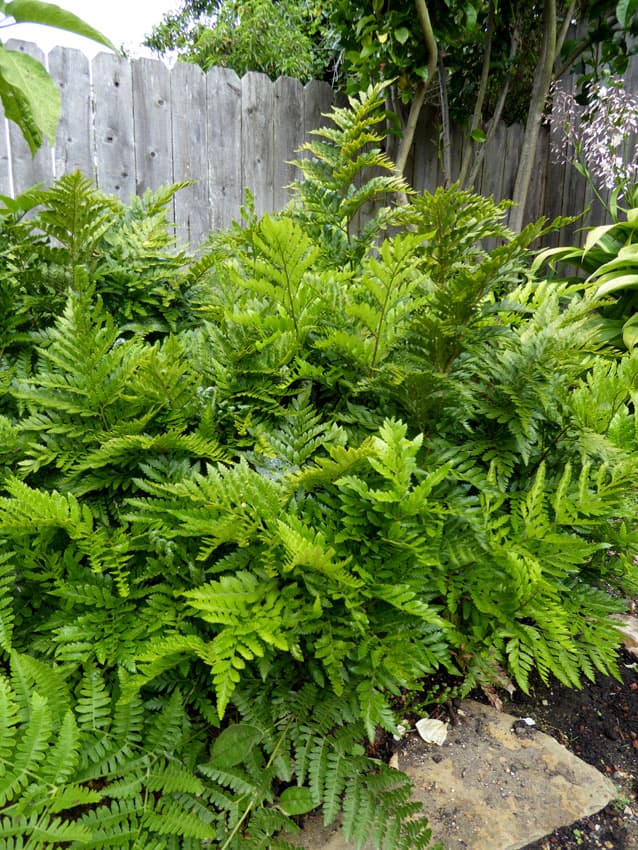
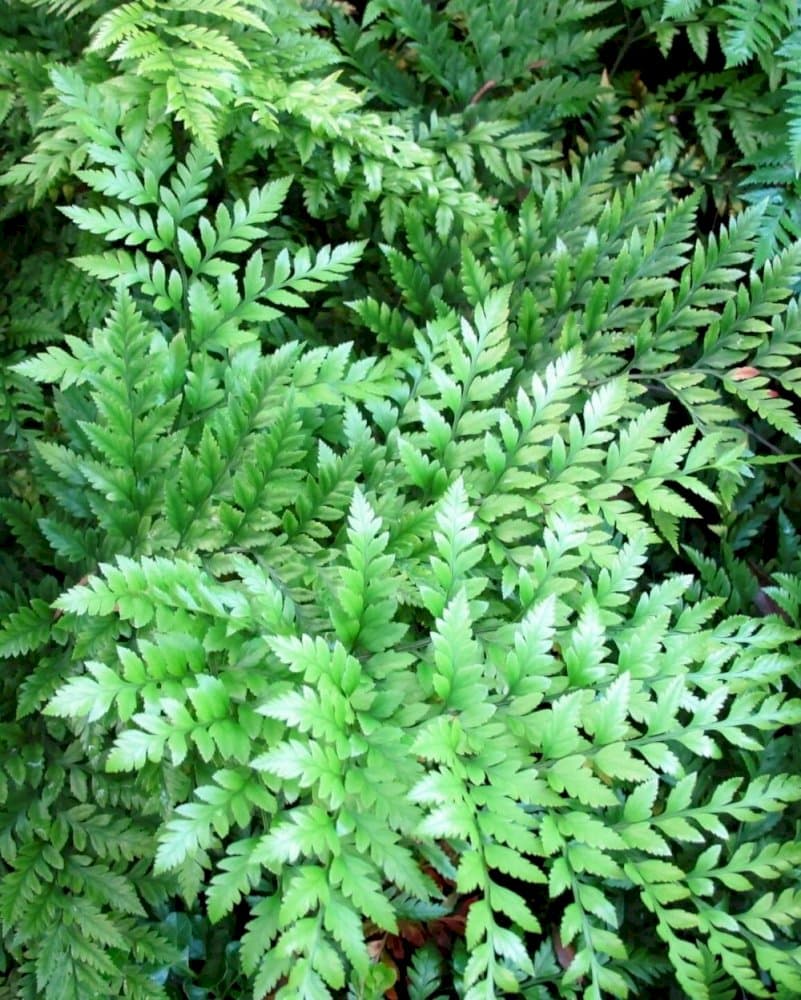
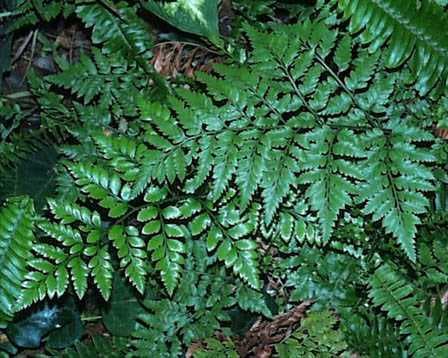
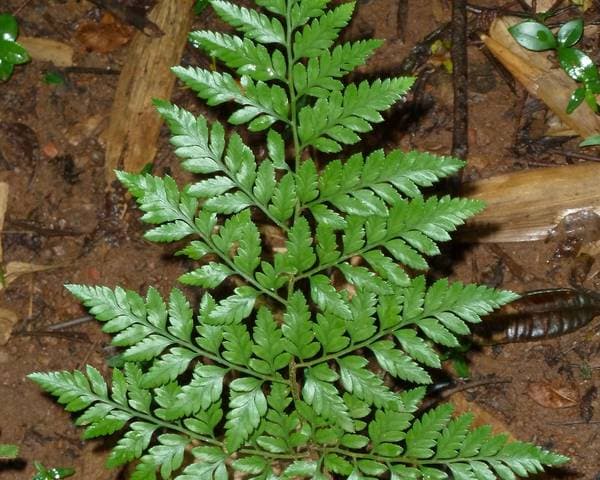
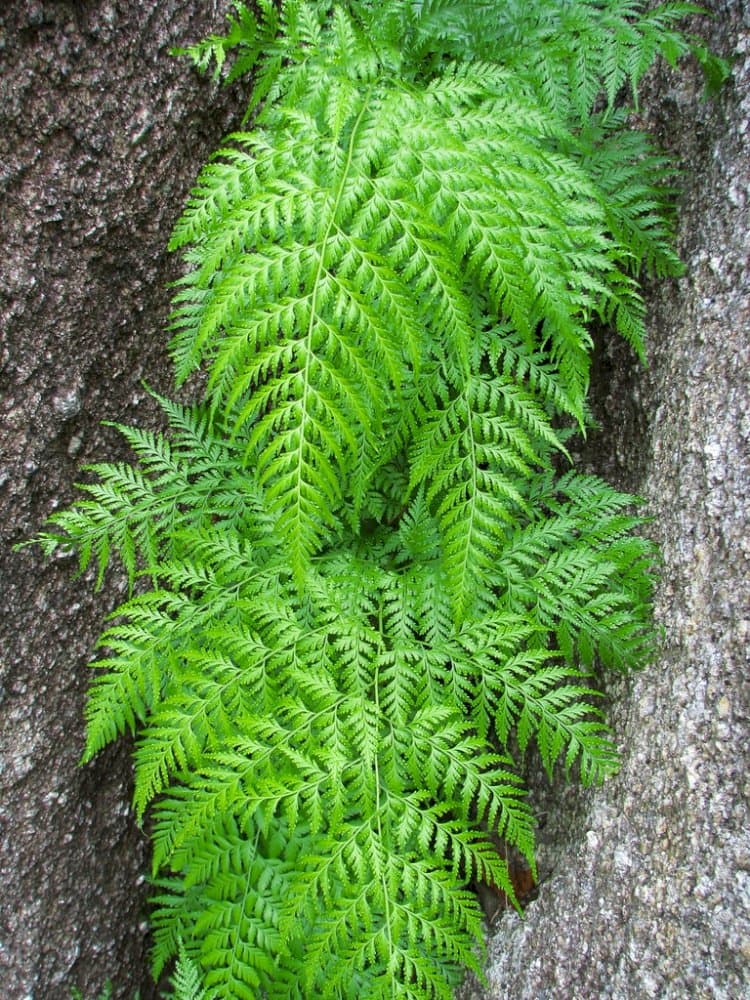
ABOUT
The common name for Rumohra adiantiformis is leatherleaf fern. This plant is characterized by its glossy, deep green fronds that display a delicate and feathery appearance. The individual fronds are compound, meaning they are divided into smaller segments, which are called pinnae. These pinnae are arranged alternately along the main stem, giving the frond a ladder-like structure, and their edges are typically smooth. The texture of the fronds is somewhat leathery and they possess a certain rigidity while still appearing lush and full. The central stem, also known as the rachis, is sturdy and supports the fronds well. The overall shape of the fronds is triangular or lance-shaped, tapering towards the tip. When observed up close, the veining is often visible and forms a delicate network pattern across the fronds. The fronds can have a slight arch, creating an elegant and graceful silhouette for this fern.
About this plant
 Names
NamesFamily
Dryopteridaceae.
Synonyms
Leatherleaf Fern, Iron Fern, Leather Fern, Rumohra, Seven-weeks Fern, Florist's Fern.
Common names
Aspidium adiantiforme, Polypodium adiantiforme, Lastrea adiantiformis, Nephrodium adiantiforme, Leptorumohra adiantiformis, Polystichum adiantiforme, Dryopteris adiantiformis, Rumohra glandulosa, Aspidium glandulosum.
 Toxicity
ToxicityTo humans
Leatherleaf fern, commonly known as Rumohra adiantiformis, is not considered toxic to humans. There are no well-documented cases of poisoning or adverse effects from ingesting or handling this plant. Therefore, it is generally regarded as safe with respect to human toxicity.
To pets
Leatherleaf fern is also non-toxic to pets. It does not contain any known toxic substances that would cause harm to animals if they ingest it. As a result, there are no specific symptoms associated with poisoning since it is not considered poisonous to domestic animals like cats and dogs. However, it is always wise to prevent pets from eating plants, as individual animals might have unique sensitivities or the potential for gastrointestinal upset.
 Characteristics
CharacteristicsLife cycle
Perennials
Foliage type
Evergreen
Color of leaves
Green
Height
2-3 feet (0.6-0.9 meters)
Spread
2-3 feet (0.6-0.9 meters)
Plant type
Fern
Hardiness zones
9-11
Native area
South Africa
Benefits
 General Benefits
General Benefits- Ornamental Value: Leatherleaf Fern, as Rumohra adiantiformis is commonly known, is widely used in landscaping and floral arrangements for its deep green, shiny fronds which add aesthetic beauty to gardens and bouquets.
- Low Maintenance: Leatherleaf Fern is relatively easy to care for, requiring minimal maintenance, making it a popular choice for both inexperienced and expert gardeners.
- Drought Tolerance: While preferring moist conditions, this fern can tolerate periods of drought, which is beneficial in regions with water restrictions or less frequent rainfall.
- Shade Tolerance: The Leatherleaf Fern thrives in shaded areas where other plants might struggle, it's an excellent plant for adding greeneries to darker parts of gardens.
- Erosion Control: By establishing a deep root system, it helps stabilize soil and prevent erosion, especially in shady, moist environments where it can spread effectively.
 Medical Properties
Medical Properties- This plant is not used for medical purposes.
 Air-purifying Qualities
Air-purifying QualitiesThis plant is not specifically known for air purifying qualities.
 Other Uses
Other Uses- Floral Arrangements: The leatherleaf fern, which is the common name of Rumohra adiantiformis, is widely used for its long-lasting fronds in fresh, dried, and silk floral arrangements.
- Basket Filler: The fern's durable fronds are often used as a green filler in gift baskets and hampers to add a natural touch and enhance the overall presentation.
- Funeral Wreaths: Because leatherleaf fern fronds are hardy and have a dignified appearance, they are commonly included in funeral wreaths and other sympathy floral work.
- Theatrical Props: The fronds can be used in stage design and theatrical productions to create a lush, green backdrop or to represent foliage in outdoor scenes.
- Decorative Garlands: Tied together by their stems, the fronds may be used to create decorative garlands for parties, events, or as holiday decor.
- Ground Cover: When planted on the ground in shaded garden areas, the leatherleaf fern can serve as a low-maintenance ground cover that provides dense, green foliage.
- Privacy Screens: In landscapes, these ferns can be grown close together to create natural, green privacy screens around patios or in backyards.
- Green Roofs: Due to their tolerance of shade and humidity, leatherleaf ferns can be incorporated into green roof designs in temperate regions.
- Erosion Control: Planting leatherleaf ferns on slopes can help stabilize the soil and prevent erosion due to their root structure and foliage cover.
- Wedding Decor: The lush green fronds of the leatherleaf fern are often used to decorate wedding venues, providing a natural and elegant backdrop for photos and ceremonies.
Interesting Facts
 Feng Shui
Feng ShuiLeatherleaf fern is not used in Feng Shui practice.
 Zodiac Sign Compitability
Zodiac Sign CompitabilityLeatherleaf fern is not used in astrology practice.
 Plant Symbolism
Plant Symbolism- Perseverance - Rumohra adiantiformis, commonly known as the leatherleaf fern, is known for its ability to withstand unfavorable conditions and maintain its lush appearance, symbolizing an ability to endure and thrive through hardship.
- Longevity - The leatherleaf fern is often used in floral arrangements because of its long-lasting foliage once cut, symbolizing long life and survival.
- Eternal Youth - Due to its evergreen nature, the leatherleaf fern represents youthfulness and the capacity to stay young at heart regardless of age.
- Protection - In some cultures, ferns are believed to offer protection due to their dense foliage, hence the leatherleaf fern may be seen as a guardian or protective charm.
 Water
WaterLeatherleaf fern should be watered deeply whenever the top inch of soil feels dry to the touch, which typically means once every week or two, depending on the humidity and temperature of the environment. It is essential to use lukewarm water and to water the plant until excess water drains from the bottom of the pot, ensuring that the roots are thoroughly moistened. On average, this equates to around 16-24 ounces of water for a medium-sized plant. In hotter seasons or drier conditions, you may need to water more frequently to maintain consistent soil moisture.
 Light
LightLeatherleaf fern thrives in indirect light or partial shade, ideally placed in a north-facing window or a spot that is shielded from direct sunlight. The best spot for this plant would be one that receives bright, filtered light for several hours each day without exposure to harsh midday sun, which can scorch its delicate fronds.
 Temperature
TemperatureLeatherleaf fern prefers a moderate to warm environment with temperatures ranging between 60 and 80 degrees Fahrenheit. It can tolerate a minimum temperature of about 50 degrees but should be protected from sudden cold drafts and temperatures below this range. The ideal temperature promotes healthy growth and prevents cold damage.
 Pruning
PruningPruning Leatherleaf fern is generally done to remove any dead or damaged fronds, promote bushier growth, and maintain an attractive shape. It's best to prune in the spring or early summer when the plant is actively growing. Cut the fronds back to the base of the plant, and you can prune once every year or as needed to tidy up the fern.
 Cleaning
CleaningAs needed
 Soil
SoilLeatherleaf fern thrives in rich, well-draining soil with peat moss or compost. Aim for a slightly acidic to neutral pH of 5.5 to 7 for optimal growth.
 Repotting
RepottingLeatherleaf ferns should be repotted every 2-3 years to refresh the soil and provide room for growth.
 Humidity & Misting
Humidity & MistingLeatherleaf fern prefers high humidity levels, ideally between 60-80%, to mimic its natural tropical habitat.
 Suitable locations
Suitable locationsIndoor
Place Leatherleaf fern in bright, indirect light with high humidity.
Outdoor
Grow Leatherleaf fern in shade with moist soil and shelter from wind.
Hardiness zone
9-11 USDA
 Life cycle
Life cycleThe life of the leatherleaf fern, Rumohra adiantiformis, begins with spore germination, where haploid spores released from the parent plant's sporangia grow into a small heart-shaped prothallus, or gametophyte. This gametophyte houses both the male (antheridia) and female (archegonia) reproductive structures. Upon fertilization, which requires a moist environment for the sperm to swim to the egg, a new diploid sporophyte emerges and gradually develops into a young fern. The young fern continues to grow, unfurling its characteristic fronds via a process called circinate vernation, where the young fronds emerge tightly coiled and slowly unfurl as they mature. Once mature, the fern produces sporangia, typically found on the undersides of the fronds, completing the reproductive cycle as it releases spores to propagate the species. Throughout its life, the evergreen leatherleaf fern thrives in humid environments, often spreading vegetatively through underground rhizomes in addition to its sporic life cycle.
 Propogation
PropogationPropogation time
Spring to Summer
The Rumohra adiantiformis, commonly known as the leatherleaf fern, is commonly propagated through division, which is the most popular method for this plant. The best time to propagate the leatherleaf fern by division is during the spring or early summer when the plant is actively growing. To propagate by division, carefully remove the fern from its pot and gently separate the rhizomes, ensuring each section has at least a few fronds and a portion of root attached. These sections can then be potted into individual containers filled with a well-draining potting mix. It is important to maintain consistent moisture and place the new plants in indirect light until they establish and begin to show new growth. This non-invasive approach allows gardeners to expand their collection of leatherleaf ferns or share with others.

